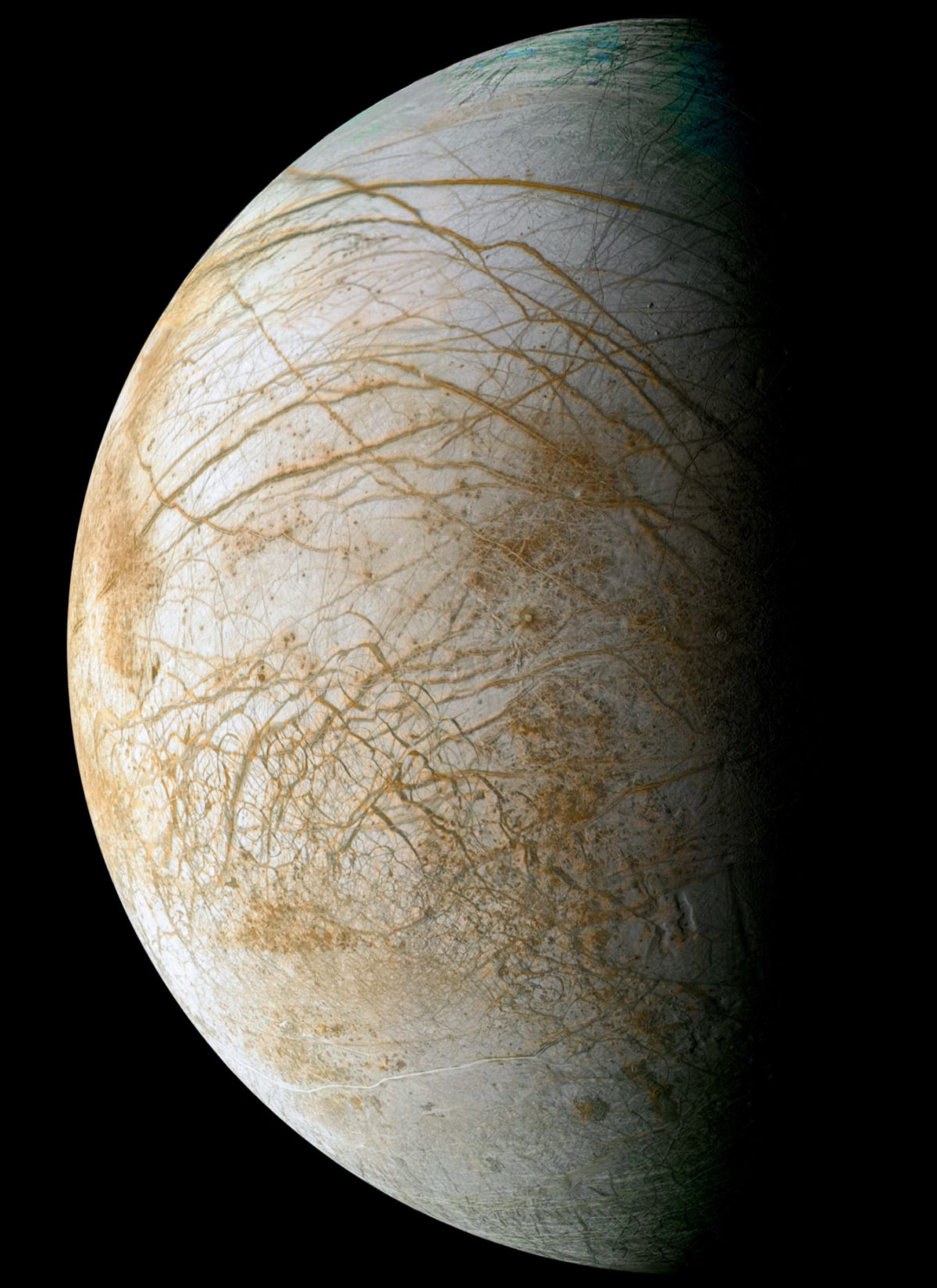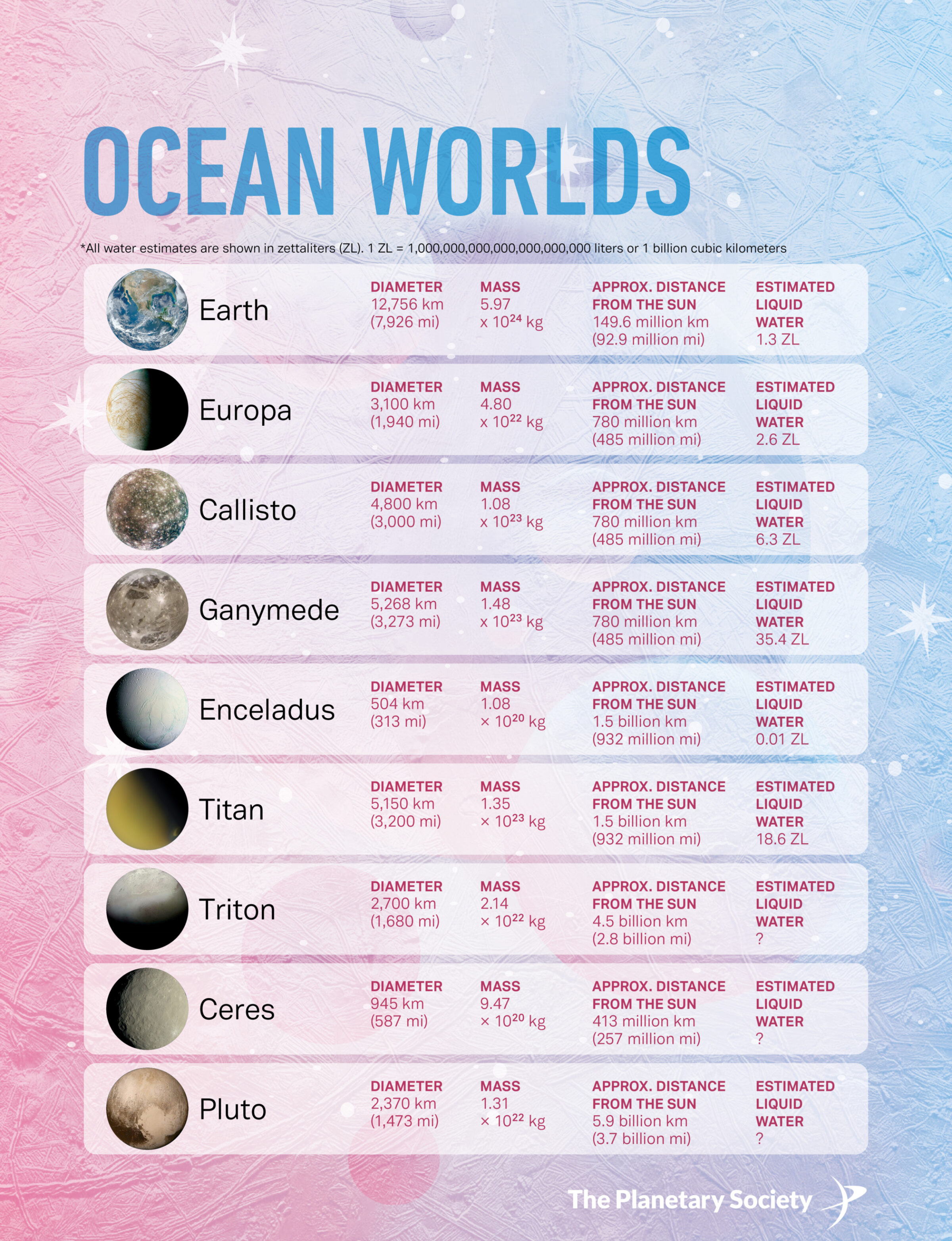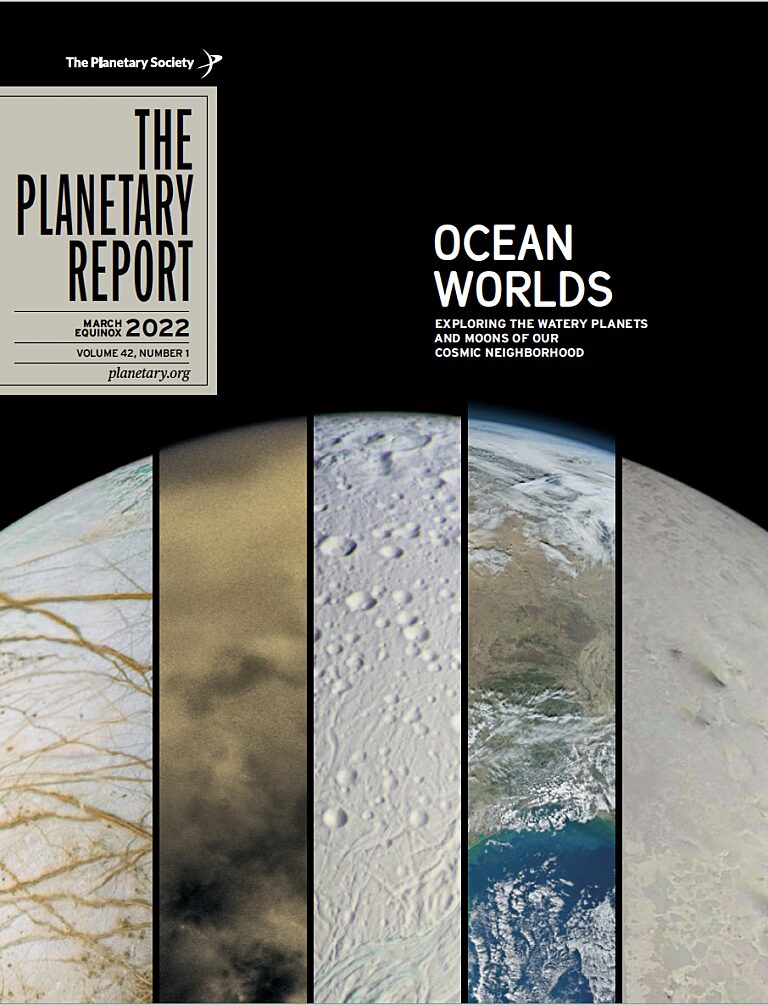Where are the ocean worlds in our solar system?
Ocean worlds are planets, moons and rocky bodies in our solar system where there are large amounts of water.
Many of Saturn and Jupiter’s moons — including Enceladus and Europa, respectively — have long been suspected of having oceans concealed beneath their surfaces. But there are other worlds at edges of our solar system that may hold secret oceans of their own, like Neptune’s moon Triton.
Currently, Earth is the only ocean world we know of with absolute certainty. But other potential ocean worlds are worth studying and exploring for many reasons. For one thing, it’s possible that ocean worlds are among the best candidates to search for life, since life on Earth may have begun in our oceans.
It’s impossible to know exactly how many there may be, but the current information at our disposal presents a map — or at least scattered parts of one — to the watery worlds of our cosmic neighborhood.

Europa
Jupiter’s smallest Galilean moon harbors a global ocean beneath the solar system’s most impenetrable snowglobe.
Estimates say Europa’s saltwater ocean holds more than twice the amount of water in all of Earth’s oceans despite the moon itself being only a fraction of our planet’s size. The ocean could plunge as deep as 60 to 150 kilometers (40 to 100 miles) and may have seafloor vents similar to those on early Earth.
Though Europa is one of the most well-known ocean worlds, its subsurface waters have never been directly imaged or explored — for understandable reasons. There would be nothing easy about such a mission; a hypothetical journey toward the center of Europa would’ve made Jules Verne wince.
“On Europa, the ice is about 110 kelvins on the surface,” said Mohamed Nassif, an aerospace engineering Ph.D. student at Georgia Institute of Technology who has worked on a Europa lander concept. “The hardness of the ice is comparable to a diamond.”

Not only is Europa’s icy exterior extremely tough but it’s also unclear how deep it really is, making the ocean beneath it even more elusive. NASA estimates that Europa’s crust is about 15 to 25 kilometers (10 to 15 miles) thick, with some variation depending on the region. That might not seem large given the enormous scale of everything in space, but for context, the deepest hole ever dug on Earth, Russia’s Kola Superdeep Borehole, plunged about 12 kilometers (7.5 miles). That project was considered so wildly dysfunctional and expensive that it had to be scrapped, so if we ever plan to perforate Europa’s diamond tundra, we have work to do.
In the meantime, there’s some progress already in motion. NASA’s Europa Clipper, set to launch in 2024 and reach its destination in 2030, will investigate Europa’s ocean from afar and assess whether Europa has the right conditions for life.
“Clipper will have 10 instruments, each having an important role,” said Caitlin Ahrens, a NASA postdoc at Goddard Space Flight Center. “While the chemical analyses instruments will be used for searching for life on Europa, the spectrometers will also help guide us to where the ‘life hotspots’ may be.”

Enceladus
Friendly rivalries can’t help but extend all the way to Saturn, even with something as esoteric as saltwater worlds.
Though there are many neutral parties, Europa enthusiasts and fans of Saturn’s moon Enceladus are generally happy to debate with each other — and the occasional bystander — about which one is more likely to harbor life. A major selling point for Enceladus is that some of its ocean spray has already been sampled, and the findings so far have been compelling.
While a handful of spacecraft have visited the Saturn system, it was NASA’s Cassini mission that gave us the most unprecedented detail of Enceladus’ ocean. Between 2008 and 2015, the spacecraft swept through the moon’s plumes, directly sampling its ocean spray. While it didn’t detect life, Cassini’s discoveries have elucidated Enceladus’ ocean, making it an even more tantalizing destination for future study.
“Cassini basically sniffed Enceladus’ plumes,” Ahrens said. “What it found was not only evidence of liquid salt water but also that it was warm.”
Another critical finding was that Enceladus’ subsurface ocean has hydrothermal vents on its seafloor. It seems that as Saturn and possibly the planet’s moon Dione pull on Enceladus, the tiny moon flexes, causing material from these vents to eject out of fissures on Enceladus’ Southern Hemisphere. Through these so-called “tiger stripes,” ocean spray blasts into space.
Though scientists are still combing through Cassini data, it has also become clear that Enceladus’ ocean contains molecular hydrogen — which NASA has called “candy for microbes” — as well as other building blocks for life, Iike carbon dioxide and methane. On paper, it’s pretty similar to the conditions that allowed ocean life to propagate on early Earth.
Unfortunately, no space agency has announced concrete plans to return to Enceladus. But if life might be feasting around the moon’s hydrothermal vents, perhaps more scientific snuffling is needed to make sure.

Titan
Described as “bizarro Earth,” Titan is arguably one of the most overlooked ocean worlds in the solar system. To be fair, it’s easy to ignore what’s going on underground when the moon has methane lakes and seas right on its surface. The largest of the latter, Kraken Mare, is a 305-meter-deep (1,000-feet-deep) pool of hydrocarbons. Clearly, it has earned its name.
It’s precisely Titan’s twisted chemistry that makes its oceans — methane, ethane and liquid water — all the more fascinating. In the moon’s thick, hazy atmosphere, nitrogen and methane react to form organic compounds that then fall to the surface, interacting with whatever they strike.
“There’s this layer of organic deposits on the surface and then there’s an ocean too,” said Xinting Yu, a postdoc fellow at the University of California, Santa Cruz who is studying Titan. “The coolest thing is when you have a major impact, smashing the surface can get some of the water out from the ocean. And then that’ll form a liquid pool for some time.”
Some scientists think the organics found on Titan bode well for finding life in its subsurface ocean. Modeling has shown that the moon’s liquid water ocean may contain hydrogen and carbon — two key building blocks for life. But NASA’s upcoming Dragonfly mission, expected to launch in 2027, will provide a wealth of data directly from the world itself. The quadcopter will search for signs of past or present life on Titan, in its atmosphere and within its underground reservoir.
“Part of the reason for sending Dragonfly is astrobiology-related,” Yu said. “It’s going to land on the rim of an ancient crater and then hop around, which should answer some questions about the different processes and prebiotic chemistry that could be happening on Titan’s surface.”
It’s anyone’s guess what Dragonfly will find in Titan’s seas. But if there are methane-munching microbes, it would be nothing short of life altering.

Triton
The outermost stretches of our solar system are tragically underexplored, and the Neptune system is no exception. Its only visitor, Voyager 2, passed through in 1989. For this reason, we have severely limited information on Triton, a fascinating moon that may have a subsurface pool of its own. A secret ocean would certainly be on-brand for something in the realm of the Roman sea god.
While there’s an obvious dearth of data, theoretical models suggest Triton could hold liquid water beneath its surface. Some of these models suggest tidal heating from Neptune’s gravitational pull could allow Triton’s interior to be warm enough to conceal a liquid ocean. In theory, the process is similar to what occurs in both Europa and Enceladus.
But the most compelling and controversial evidence for Triton’s ocean comes
from a mystery that has spanned more than 30 years. As it flew by Triton, Voyager 2 observed dark plumes shooting from the moon; for this reason, some scientists have compared Triton to Enceladus. However, others have theorized that geysers were a fleeting rarity caused by sunlight striking a specific region on Triton’s surface.
That explanation still doesn’t satisfy another one of Triton’s mysteries: a disappearing act. Voyager images show the moon’s surface is geographically young and surprisingly lacking in craters. One idea is that liquid water is “erasing” the craters, which would point to some sort of reservoir beneath Triton’s crust.
Regrettably, without more missions, Triton remains a scientific wild card.
What the future holds (and why it’s good to have hope)
There’s a lot we don’t know about the oceans of our solar system, but we’re learning more all the time. In fact, we’re on the precipice of an exciting new era of ocean world exploration.
In just a few years, Europa and Titan will get their own dedicated missions, which will undoubtedly solve old mysteries and spark new ones. The European Space Agency’s JUICE mission, which will investigate three of Jupiter’s icy moons, will also scope out Callisto, a so-called “dead moon” that may actually hold a thriving ocean.
So, the search continues, even if it’s a slow crawl against the tides of time. May we be so lucky to find life along the way.
Support our core enterprises
Your support powers our mission to explore worlds, find life, and defend Earth. You make all the difference when you make a gift. Give today!
DonateThe Planetary Report • March Equinox
Help advance space science and exploration! Become a member of The Planetary Society and you'll receive the full PDF and print versions of The Planetary Report.


 Explore Worlds
Explore Worlds Find Life
Find Life Defend Earth
Defend Earth


